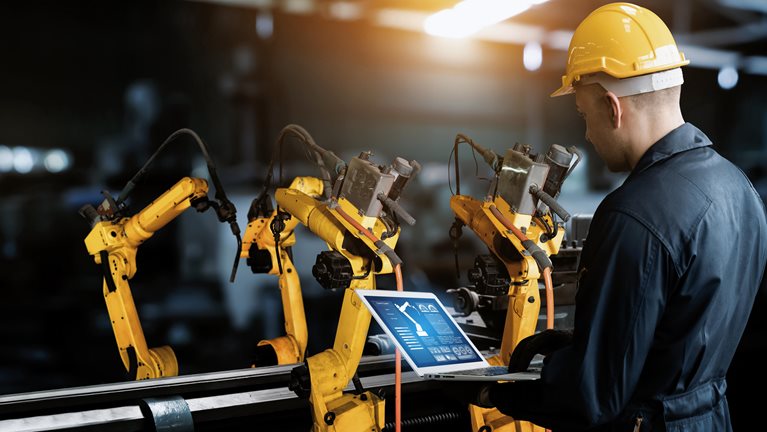After the historic disruptions of 2020 and early 2021, the exit from the COVID-19 pandemic is raising a host of critical operational questions for businesses. A rapid but bumpy recovery is putting short-term pressure on sales and margins, while urgent action is needed to stay ahead of longer-term disruptive change. This complex and uncertain environment presents heightened risks, but it is also creating spaces in many industries, opening opportunities for innovation and growth. Companies that can adapt faster and execute more efficiently than their competitors are set to reap benefits in both the short and long terms.
Following months of lockdowns and restrictions, economic activity is only slowly beginning to recover in some sectors. In others, skyrocketing demand has created significant supply-side challenges. Carmakers, for example, have been forced to temporarily shut down plants and cut production by up to 40 percent because of shortages of critical components, especially semiconductors.
Companies are struggling to find workers too. The US job-opening rate is around 50 percent higher than before the pandemic, while around four million people have left the civilian workforce. Shortages are particularly acute in key operational sectors, including truck drivers and frontline manufacturing or warehouse personnel.
Similar issues are rippling across many industries. With capacity constraints in production and logistics limiting the availability of products ranging from construction materials to bicycle components, an upward pricing spiral has been observed for some goods. Basic commodities such as steel, copper, and natural gas are trading at or close to historical highs (Exhibit 1). Container-shipping costs have risen tenfold or more on popular routes.

These higher costs might prove short lived if the entire global economy roars back to life. But they also raise concerns about a more prolonged period of inflation, which could negatively affect growth in the medium term. In October 2021, the International Monetary Fund warned that “inflation risks are skewed to the upside” and that central banks should be ready to act if high costs in specific sectors begin to drive up prices and wages more broadly. In financial markets, medium- and long-term inflation expectations are at an eight-year high.
While meeting today’s customer demand is difficult enough, many industries still lack a clear picture of what their customers will want tomorrow. The emergence or resurgence of COVID-19 hot spots around the world is leading governments to impose new restrictions, often at short notice, with knock-on effects on business activity and consumer confidence. Yet once restrictions are lifted for good, companies and individuals will need to decide how much they want to hang on to a range of pandemic-inspired behavior changes, from videoconferences and work from home to staycations and online food delivery.
Then there’s the day after tomorrow. Business faced diverse challenges, including the impact of rising geopolitical tension and growing pressure from customers, regulators, and investors to tackle environmental sustainability, social justice, and climate change, before the COVID-19 pandemic. The imperative to act on those challenges is now urgent.
If 2021’s extreme temperatures, floods, and forest fires weren’t enough to stir business leaders into action, then a tidal wave of regulatory change is likely to do so. There are 137 countries that have now pledged to achieve net-zero carbon emissions by the middle of this century or a little after, for example, and many major economies are now backing up these high-level commitments with specific legislation. Some 23 countries have announced bans on the sale of fossil-fuel-powered cars over the next three decades, with Norway imposing the rule starting in 2025.
New rules are also forcing companies to take responsibility for the impact of their wider value chains. In Germany, for example, the Lieferkettensorgfaltspflichtengesetz, or Supply-Chain-Care Obligations Act, will require organizations to ensure that their direct and indirect suppliers meet a broad range of environmental and social standards in 2023. Similar regulations are in the pipeline, or already in place, in many other major economies.
The labor challenge is also set to become more acute. The pandemic has accelerated the automation and digitization ambitions of many organizations, with knock-on effects on their current and future skill needs. To keep labor supply and demand in balance, research by the McKinsey Global Institute suggests that, across the world’s eight largest economies, more than 100 million people (one in every 16 workers) will need to transition to new roles by 2030. In advanced economies, that figure represents a 25 increase on prepandemic predictions.
Business operations in the spotlight
For CEOs, these trends raise tough questions that are operations-related at their core. “Can we meet customer demand, both today and tomorrow? Should we boost capacity to prepare for a prolonged period of rapid growth or reduce it, preparing for a slowdown and the threat of stagflation? Where will we get the skilled, digitally savvy workforce we will need in the coming years? How do we decarbonize, minimize regulatory risk, and still stay in business?” Too often, the answers reveal that a company’s operations are not fit for purpose in a such a complex, uncertain, and fast-changing environment.
Modern global supply chains and lean production systems were designed to deliver high-quality products and services at the lowest possible cost. They work best when supply and demand behavior are well understood and when every participant in the value chain is performing as expected. That’s proving to be a costly assumption. Modeling by the McKinsey Global Institute suggests that, over a decade, the average large company can expect that supply-chain disruptions will cause losses equivalent to approximately 42 percent of one year’s earnings.
In a McKinsey survey of supply-chain leaders, 93 percent of respondents told us that the COVID-19 crisis had exposed problems with their global manufacturing and supply footprints. By the middle of this year, however, only 15 percent had begun to make structural changes, such as nearshoring of production and diversification of their supplier bases, in response (Exhibit 2).

Similar gaps between ambition and reality are visible across other aspects of business operations. Take the adoption of digital technologies. The mass shift to remote working was a digital success story, and the pandemic encouraged some companies to dramatically accelerate the implementation of digital projects. But in other areas, such as the digitization of manufacturing operations, progress remains slow, even as companies reach the limits of established productivity-improvement methodologies such as lean management.
For example, over the past four years, experts from the Global Lighthouse Network (GLN)—a World Economic Forum initiative in collaboration with McKinsey—have assessed more than 1,000 manufacturing companies around the world in the search for “lighthouse” examples of the application of Fourth Industrial Revolution technologies. As of 2021, 90 facilities had made the grade. And of those, only a minority can claim to have cracked the code on end-to-end process digitization.
And most companies admit that they have yet to fully understand the shape of their medium-term challenges, let alone how to fix them. For many products, 80 to 90 percent of greenhouse-gas emissions are scope 3: indirect emissions that occur across the company’s value chain, such as embedded emissions in purchased goods and services, employee travel and commuting, and the use and end-of-life treatment of sold products. Of these emissions, two-thirds are usually from the upstream supply chain. Tier-n suppliers are also more difficult to monitor, increasing the risk that poor environmental or labor practices go unnoticed. Supply-chain leaders in our recent survey think that they understand the key-risk exposure of about half their tier-one suppliers. At tier three, that number drops to only 2 percent.
Even once companies understand their suppliers’ risk exposure, they simply do not have operational solutions to some of their biggest upcoming challenges. Many of the technologies required for a net-zero economy are not yet technically or commercially viable or available at scale. When one carmaker mapped out the steps required to eliminate emissions from vehicle production, for example, it found that less than 25 percent of its path to zero emissions is net-present-value positive at current costs (Exhibit 3). In a 2021 McKinsey survey of more than 1,000 senior manufacturing and supply-chain executives, only 3 percent of respondents say that they believe their companies can economically decarbonize their footprints by 2040.

Data from the same survey suggest that companies do at least recognize the need for change across their business operations. Some 70 percent of respondents think that the increased use of digital technologies will be critical to their productivity-improvement efforts over the next three years (Exhibit 4). And 66 percent of respondents in the consumer-packaged-goods sector say that they plan to decentralize their supply networks, moving warehouses and logistics centers closer to their customers.

Why, then, are so few companies succeeding in a transformation of their operations that they understand is necessary? We believe that most are aiming too low. Moves such as incremental adjustments to supply networks, digitizing fragments of existing processes, and reducing the use of a few environmentally harmful materials are useful—but they won’t deliver the step change in performance that industries need. Instead, the new business-operations agenda calls for a bold vision and large-scale, pan-organizational change. That makes it a CEO-level challenge.
Three business-operations imperatives for the CEO
The ability to execute in a complex, uncertain, and rapidly evolving environment is set to become a decisive competitive differentiator in the coming years. Companies will need both the resilience to ride out shocks and disruptions and the agility to exploit emerging opportunities. They will also need to master fast, effective, coordinated, and large-scale change.
These attributes can’t be bolted on to brittle, inflexible, slow-moving operating models. Instead, they must be built into the organization’s structures, processes, and people. The CEO is therefore the catalyst for the transformation, supporting the COO and engaging the full senior-leadership team. Leaders can set their organizations on the right path with a focus on three critical starting points:
- setting up resilient, risk-tolerant supply-chain structures that abandon outdated ideas about centralization and scale
- doubling down on digitization with bold investments designed to achieve a truly end-to-end vision of what the future promises
- achieving real agility throughout the organization via better real-time visibility and systematic response to external developments
Do we have the right supply-chain structure and physical footprints?
It takes time to adapt the physical configuration of a value chain. Finding and qualifying alternative suppliers is difficult. In warehousing and logistics, networks and flows are tricky to set up, integrate, and optimize. Building new plants, or closing old ones, is a complex, costly exercise. As a result, the structure of the supply chain at many organizations tends to be set up to meet yesterday’s requirements rather than tomorrow’s.
The gap between the physical footprint an organization has now and the one it likely needs for the future is set to grow rapidly in the coming years. The shift will be driven by multiple forces, including the need to mitigate the risks of supply disruption; the push for localized supply chains that can respond faster to volatile demand; the search for resource-efficient, low-carbon materials; and a broader reevaluation of the right location and size for manufacturing sites and front offices.
To close that gap, companies can take a fresh look at their networks and supply-chain structures. That means revisiting fundamental considerations, such as make-or-buy decisions. From product design to final assembly, some activities that were once considered core to the organization might be done more efficiently, and with less risk, by external suppliers.
Some of the paradigms that have long driven footprint-design decisions are now ripe for reconsideration. McKinsey research in the automotive sector, for example, found that midsize supplier plants with 1,000 to 1,500 direct employees were almost twice as likely as their smaller or larger counterparts to achieve top-quartile productivity. Manufacturers that split production over several medium-size plants rather than one megafactory may also benefit from closer proximity to customers and reduced location risks, such as weather-induced shutdowns and energy price spikes.
Are we digitizing fast enough?
Over the past decade, digital-native players have grown from nothing into multibillion-dollar organizations, disrupting multiple industries along the way. Yet in that time, only a handful of established companies can claim that they have fully digitized their end-to-end operations.
Digitization’s success stories have shown that automation, advanced analytics, and machine learning can generate step changes in productivity, flexibility, and speed. At leading companies, digitization is driving significant improvements to key financial and operational metrics: 30 percent reductions in inventory and cost of goods sold, 50 percent reductions in cost of quality, and 30 percent improvements in cash and productivity. Right now, digital approaches offer the most feasible solution to the primary operational challenges faced by many companies and industries.
Digitization boosts sustainability too. A full 64 percent of the companies in the GLN say that Fourth Industrial Revolution technologies have helped them meet sustainability goals, often as a beneficial byproduct of efforts to address cost, productivity, or quality challenges.
The time for digital tinkering is over. If an organization has not yet embarked upon a full-scale digital transformation, it is probably behind the curve. The technical barriers to digitization are falling away thanks to the increasing maturity and rapid industrialization of critical technologies. Many advanced solutions can now be bought off the shelf or delivered as a tailored service by specialist vendors.
The remaining challenges are organizational and human. To exploit the opportunities presented by digital tools, companies need a clear view of the business priorities that digitization can address. They should be willing to take a cleansheet approach, reengineering their processes from end to end. And they need to build a workforce with the skills and mindsets the digital world requires (Exhibit 5).

Do we know what’s going on?
Too many companies still run their operations blindfolded. Limited information sharing and collaboration among functions, sites, and business units make optimal decision making slow and unwieldy—or impossible. And internal coordination is only a fraction of the challenge. Companies’ knowledge of the situation at their direct suppliers is usually patchy at best. Their picture of the deeper tier-n supply chain is practically nonexistent. When events take organizations by surprise, as they all too often do, many lack the systems and structures necessary to mount an effective and timely response.
Instead of lurching from operational crisis to operational crisis, CEOs naturally want the organizational muscle to navigate complexity and uncertainty. That requires four core capabilities: enhanced monitoring of the internal and external operational environment, a dedicated plan-ahead team, an effective escalation mechanism to manage the organization’s response to emerging situations, and the ability to stand up a full-blown nerve center to handle the most disruptive events.
Digitization offers part of the solution to the transparency problem. Digital connections make it easier to share data within and between organizations, often in real time. New and emerging digital solutions are also giving companies unprecedented access to external information that could affect their business operations, from logistics disruptions to environmental, social, and governance (ESG) risks and prospective changes to legislation. Leading organizations are already building operational control towers that act as central hubs for a wide range of operationally relevant data.
The value of that data is limited by the organization’s ability to analyze and act upon it, however. To facilitate this analysis and enable rapid, coordinated, and fact-based decision making, organizations need a plan-ahead team. This team is charged with collecting forward-looking intelligence, developing scenarios, and identifying the options and actions needed (Exhibit 6). Effective plan-ahead teams are modular in structure, with different cells looking at specific issues over a range of time frames, from the next few days to the coming years.

A company also needs an escalation mechanism to create a robust link between analysis and action. Working with senior leadership, the plan-ahead team can define appropriate actions for different scenarios and establish trigger points that determine when the organization should begin detailed planning and execution of those actions. Steep or sustained increases in the prices of key inputs, for example, might trigger a cross-functional effort to capture cost savings, find and approve alternative commodities and their sources, and develop deeper partnerships with key suppliers to generate additional sources of value. Getting these trigger points right can be a challenge, however. Set them too low, and the monitoring system can become a source of false alarms, leading to organizational fatigue.
As recent history has shown, some events are too large, too rapid, or too unexpected for playbooks or preexisting response plans. Companies need to plan for these, too, however. The crisis-management centers, or war rooms, established by many companies during the COVID-19 pandemic provide a template for a nerve center that serves as the eyes, ears, and brain of its wider business operations. Before the next big disruption, we believe that every organization can prepare by outlining how it will set up and run a nerve center as the final escalation of its response.
The COVID-19 crisis lifted operations-related issues to the top of the senior-leadership agenda. There’s good reason for them to stay there. The transition to the postpandemic economy is already testing the resilience of business-operations functions in multiple industries. The transition to a low-carbon economy is set to test them even further. And all this volatility is continually opening new value pools for companies with the agility to seize them. The challenge for today’s CEOs and top teams is to get their organizations onto the front foot, building the supply chains, digital skills and capabilities, and organizational muscle needed to thrive in a next normal that promises to be anything but “normal.”


